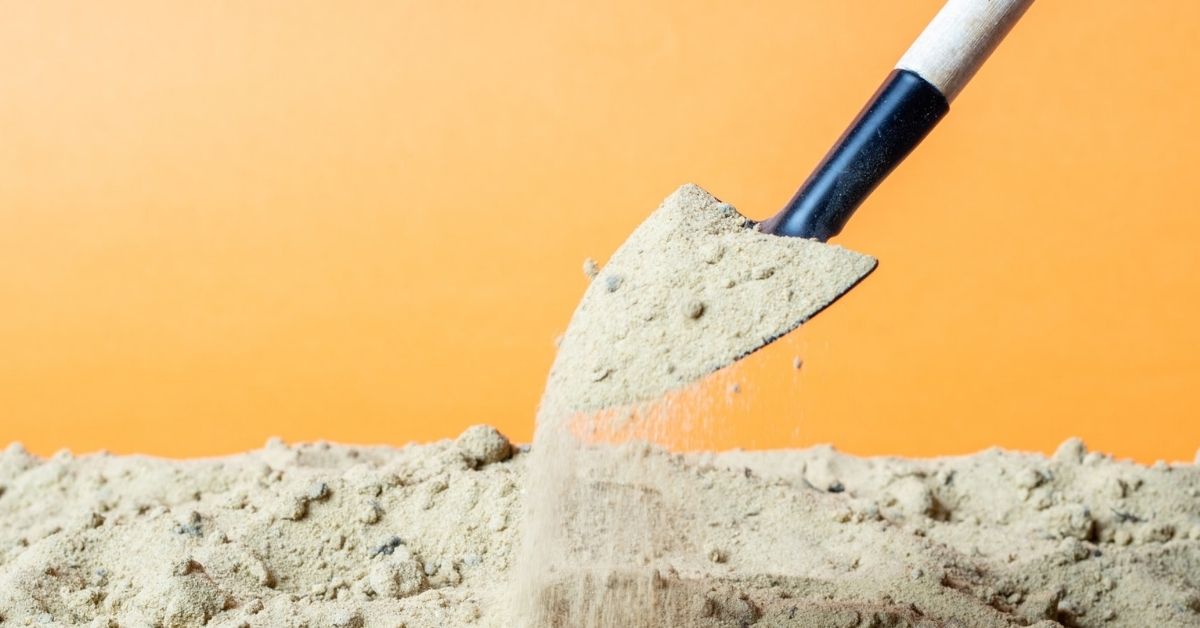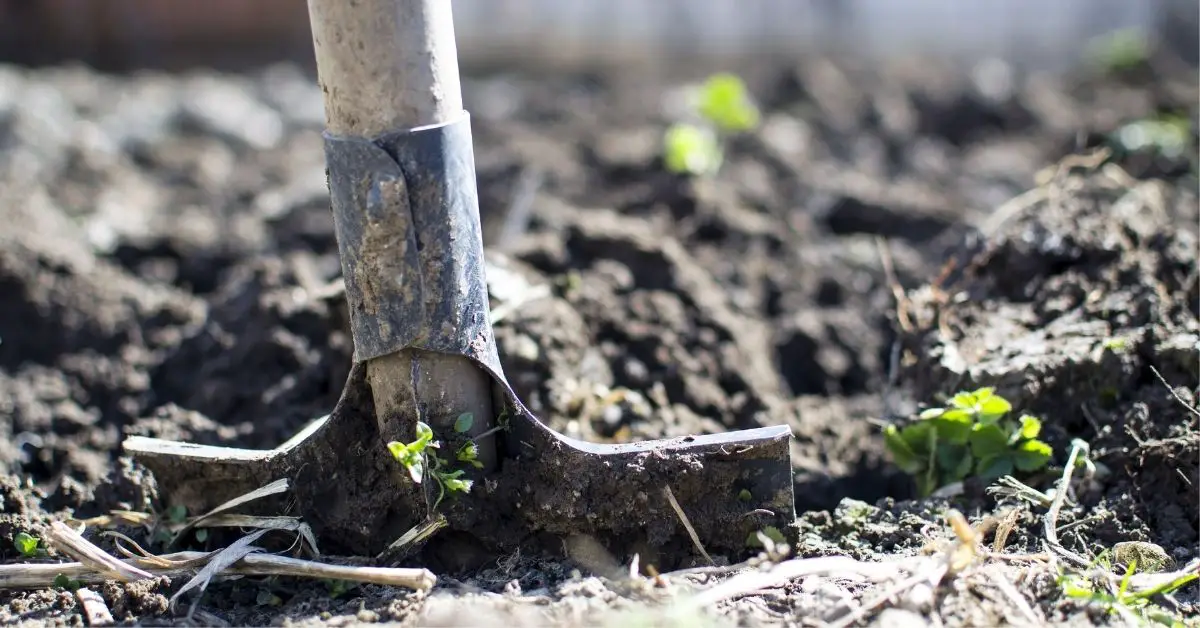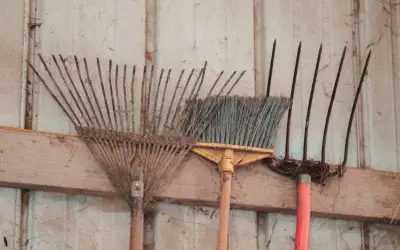Share

- Types Of Shovels
- What To Look For In A Shovel When Buying
- How To Choose The Right Type Of Shovel For You
- Tips On How To Care For Your New Shovel
- Preventing Your Shovels From Becoming Rusty
Many people are surprised to learn that there are different types of shovels. These tools can be used for a variety of purposes, but they all have various features that make them stand out from one another. This blog post will talk about the three most common types of shovels and what makes them unique!
Types Of Shovels
There are many different types of shovels that you can use for digging, but knowing what each one is used for will help you decide which ones might be right for your planting projects.
Flat Shovel
A flat shovel is one of the most common types of shovels. It has a flat blade that has a pointed tip.
Uses Of Flat Shovel
This type of shovel is used to level the soil, move dirt from one place to another, and dig.
Spade Shovel
A spade shovel has a much wider blade than flat shovels do. This makes it easier to dig holes because you can scoop out more material at once. It also means that there will be less strain on your back.
Uses Of Spade Shovel
This type of shovel is mainly used for digging holes to plant or transplant something, but it can also be used as a flat shovel if necessary. It’s especially useful in looser soils than the other types because you’ll need less effort and strain on your body.
Scoop Shovel
Scoop shovels are very similar to spade shovels, but the blade is flattened instead of round. This makes it easier for your to scoop up dirt and move it around. It also means less strain on your back because you’re dealing with a smaller amount of material at once than with flat or spade shovels.
Uses Of Scoop Shovel
Scoop shovels are mainly used for planting or transplanting something. If necessary, they can be used as a spade shovel, but won’t work well in very hard soils because scooping motions with this type of blade isn’t effective the same way they would be on a flat one.
Trench Shovel
Trench shovels are the smallest type of shovel. They have very pointed tips and narrow blades so that they can be used to dig trenches or small holes without disturbing too much material at once. This makes them more effective for digging in difficult soil because you won’t disturb as many roots if there’s anything like grass growing where you want to dig.
Uses Of Trench Shovels
This type of shovel is mainly used for digging holes or trenches to plant things in, but can also be used as a flat shovel if necessary. It’s especially useful when the soil isn’t too loose and it has smaller blades than spade or scoop ones do because you won’t disturb as much material and roots.
Edging Shovel
Edging shovels are very similar to trench shovels, but they have longer blades and pointed tips. This makes them ideal for digging trenches or holes around trees or other plants where you don’t want the material disturbed too much, as it would be if you used an edging spade instead.
Uses Of Edging Shovels
This type of shovel is mainly used for digging trenches or holes around trees, but can also be used as a flat shovel if necessary. It’s especially useful in looser soils than the other types because you’ll need less effort and strain on your body. Another benefit is that it doesn’t have to be sharpened nearly as often since it’s not used to cut through roots and other material as much.
Tree Planting Shovel
Tree planting shovels are the most specialized type of shovel. They have a long blade with a pointed tip and very little means for cutting through roots or other material, just an extremely sharp point that can be used to poke holes in hard-packed soil without disturbing too many roots. This makes them ideal for transplanting trees because they dig very precise holes for the roots.
Uses Of Tree Planting Shovels
Tree planting shovels are mainly used to transplant trees, but can also be used as a trench or flat shovel if necessary. They have very sharp points so they don’t need to be sharpened nearly as often and there’s no blade that needs to cut through roots or materials to get the job done.
Square Point Shovel
Square point shovels are very similar to trench shovels, but the blade is squared off instead of pointed. This makes it easier for you to dig trenches or holes without disturbing too much material at once and also means less strain on your back because you’re dealing with a smaller amount of material at once than with flat or spade shovels.
Uses of Square Point Shovels
This type of shovel is great for digging trenches or holes. It is also good for mixing soil, sand, and aggregate together to fill in trenching areas.
Mini-Shovel
Mini-shovels are very small and have a pointed tip. They’re extremely useful for digging in hard to reach places, such as potted plants or flower beds with tight corners. This is because they can be used more easily than larger shovels would due to their size and the fact that you don’t need a large amount of force to dig with them.
Uses Of Mini-Shovels
Mini-shovels are used for digging in tight places, such as potted plants or flower beds. They can also be used when transplanting small trees and shrubs because they have a pointed tip so you won’t disturb any roots and they’re small enough to fit in tight areas.
Post Hole Shovels
Post-hole shovels have a pointed blade and a flat back to make the material easier to lift out. They’re very similar to trench shovels other than their blades being slightly narrower, but they also have longer handles, making them ideal for digging holes or trenches where there’s no risk of disturbing too many roots at once because you’ll use them in hard, packed soil.
Uses Of Post Hole Shovels
Posthole shovels are mainly used to dig holes or trenches where there’s no risk of disturbing too many roots because they will be used in hard, packed soil.
They can also be useful for mixing sand and aggregate together when digging trenching areas since they’re very narrow so you won’t disturb much material at once.
Ditch Cleaning Shovels
This type of shovel is similar to a post-hole one, except the blade is longer with multiple angles than flat on most other types.
This makes them useful for scooping out loose materials such as dirt and gravel from ditches and channels without causing major disturbance to surround plants and materials.
Uses Of Ditch Cleaning Shovels
Ditch cleaning shovels are mainly used to remove loose materials such as dirt and gravel from ditches and channels without causing too much disturbance to surround plants or material, but they can also be useful for digging in areas where there’s a high risk of disturbing roots at once since the blade is very narrow so you’ll only disturb fewer root systems when using it.
Snow Shovel
Snow shovels have a square blade and flat back so they’re great for moving loose materials such as snow without causing too much disturbance. They can be used to mix gravel or sand together when necessary, but their main purpose is scooping up material like soil or aggregate quickly and easily.
Uses Of Snow Shovels
Snow shovels are mainly used to move around loose materials like soil, sand, and gravel because the squared-off blade makes it easy to lift them out of places with little effort while avoiding disturbing surrounding plants or material at all costs.
This type of shovel is also good for filling in trenching areas since you can use it along an entire length instead of just one spot where the digging would be difficult like with a spade shovel.
What To Look For In A Shovel When Buying
The Handle
Make sure that the handle of the shovel is made out of a material that won’t crack or break easily. While wooden handles are more likely to be durable, they might not fit your height well because you’ll have to bend over too much while using them if they’re shorter than usual.
The Head
You should also pay attention to the head’s design since it will greatly affect the shovel’s performance.
Blades that are angled or curved properly can go into places where square-shaped blades cannot while flat back ones have better aerodynamics and let you scoop up loose materials more easily, but they’re harder to use in tight spaces since the blade can get caught on things at times.
The Blade
Make sure that the blade has been made from tough material so it won’t bend when using it to dig hard soil or gravel areas without worrying about its durability too much either. The handle should be strong enough as well because if not, there’s no point in even trying to dig with such a flimsy tool!
The Shaft
A hollow shaft is very lightweight and easy to move around without causing too much fatigue, but the shovel will be useless if it breaks.
Solid wooden handles tend to last longer than fiberglass or aluminum ones because they’re more resistant to friction heat that can cause them to warp over time even though you might have a harder time using them for digging since they’ll probably break before bending like with metal models.
The Material
There are a number of different materials that shovels can be made from like aluminum or fiberglass, but if you go for wood, make sure it’s treated properly with something like linseed oil to keep the grain smooth and prevent warping over time.
How To Choose The Right Type Of Shovel For You
Here are the things to consider when using a shovel:
For Tree Planting
When you are planting trees, you will need a trench shovel, a tree planting shovel, and a post-hole shovel. These three types of shovels are all great for digging holes to plant your trees in.
For Gardening/Flower Bed Care
When you are doing some gardening work in your flower bed, you might want to consider using mini-shovels for digging into tight corners of the plant beds. You can also use them when transplanting small plants that have delicate roots because they’re very easy to control without disturbing too many root systems at once.
For Snow Removal
When it comes to removing snow, you’ll need a standard snow shovel. These are easy for scooping up all the loose material, but they can also be used to mix sand or gravel when necessary since their flat blades make them ideal for that as well.
For Yard Work/Digging Up Tough Soil
If you’re digging in tough soil, you should use an entrenching shovel because it has more of an aggressive angle on its spade, which is useful for breaking through hard soils without too much effort. You can even use this type of shovel along entire lengths instead of just one spot where the digging would be difficult like with a spade shovel if needed.
For Trenching
You should use a ditch cleaning shovel or trench shovel for trenching because it is great for scooping out loose materials like dirt and gravel from ditches without causing too much disturbance. You can even mix sand or aggregate together with this type of shovel since its blade is very narrow so the digging won’t disturb more root systems at once.
For General Work/Digging
When you are digging up general materials like soil, sand, or gravel, a common spade shovel is ideal for the job. Its flat blade makes it perfect for scooping out loose material without disturbing too many root systems at once if necessary. If needed though, this type of shovel can also be used to mix in sand or aggregate together since its blade is quite wide, so stirring things around won’t take much effort.
For Roots And Weeds
When you are digging up roots and weeds, using a digging spade is the way to go. This type of shovel has a sharp point that creates an aggressive angle which allows you to dig under roots and weeds easily without disturbing surrounding plants or material too much at once since it’s very narrow in width.
For Clean-Up Jobs
The last thing we recommend using when doing clean-up jobs around your yard is a snow shovel because they’re great for moving all sorts of lightweight materials such as leaves and grass clippings quickly and easily while avoiding disturbing surrounding plants or other materials at all costs.
Tips On How To Care For Your New Shovel
- Make sure your shovel is the right kind for the job you need it to do, keeping in mind that some of them may overlap and can be used for more than one task.
- Keep sand or gravel mixed with soil when using trenching tools so they don’t cause too much disturbance while digging.
- Ensure your shovel stays sharp by cleaning dirt off after each use and always oiling metal parts of a wooden handle before putting it away to avoid rust damage over time.
- Buy replacement blades if necessary since most new shovels come with spare ones just in case yours get lost during use.
- Store all shovels carefully on wall-mounted racks or hooks rather than leaning against walls because this reduces their chances of being damaged at all costs.
- Remove dirt from shovels after use to keep them in good condition over time and make sure they’re stored on wall-mounted racks or hooks instead of leaning against walls because this reduces chances of damage while also keeping your tools within easy reach when you need them again.
Here’s an additional video on how you can use your shovel properly:
Preventing Your Shovels From Becoming Rusty
When you’re done using your shovel, remove dirt from it and store them on wall-mounted racks or hooks to prevent damage. In addition, make sure all metal parts of the wooden handle are oiled before putting away in order to avoid rusting over time. New ones will usually come with your purchase if any replacement blades need purchasing due to loss during use.
There are many types of shovels that have been created to perform certain jobs better than others depending on what is being done with them. Each type has its own particular functions and qualities that make it suitable for the job needed so knowing about each one helps you pick the right kind when you need new ones or want to replace old ones.



0 Comments